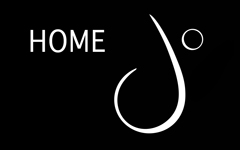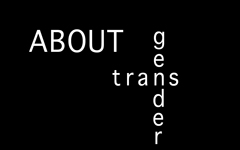Written: 2006
Royal Lyceum, Edinburgh
First performed 2006 in the Royal Lyceum, Edinburgh.
Cast: 10 actors.
Loosely based on Goethe.
Nominated for four Scottish Critics Awards: Best play, Best production, Best Actor, and Best technical presentation
When he was still a boy, Goethe’s grandma gave him a puppet theatre.
The Faust story was a popular puppet show at the time, and maybe Goethe had seen it performed. I like to imagine him, still a boy, manipulating the puppet Faust, the puppet Helen Faust summoned from the dead, and the puppet Mephistopheles dragging his creature down to hell.
What we know for sure is that the Faust story was an obsession that possessed Goethe at frequent intervals in the sixty long years of his creative life. The whole immensely long, and immensely fraught, process of creating it encompasses the profoundest changes in Goethe’s personal circumstances, his views on art, outlook on life and political beliefs, as well as huge changes in the social, political and physical landscape of Europe as a whole. He didn’t work on the project consistently, or in any kind of normal order, but in fits and starts, frequently abandoning the work altogether when the emotional and technical problems it caused him became simply too great for him to tackle at the time. And yet Faust never wholly left him alone. He was compelled to return to it again and again, rewriting, revising, creating new material until, only a few months before his death, it was finally completed. He rarely took the time or trouble to reconcile the new material with the old; as a result, the whole work rather resembles the archaeological site of one of those ancient cities in which remains from entirely different eras lie side by side, sometimes incongruously, cheek by jowl with each other. To try to make sense of it all, it is perhaps helpful to remember one of Goethe’s descriptions of his work as “fragments of a great confession”: a kind of gigantic self-portrait that somehow encompasses the whole of a human being in all his multiplicity, nobility, superficiality, vanity, humility, utter complexity and contrariness. Certainly there is a kind of sprawling human generosity to it that I love, cherish, and profoundly admire.
A few months before his death, Goethe wrote that he had carried the material for Part Two in his imagination for years and years “as an inner fable (inneres Märchen). Märchen is a word I would define as ‘fairy tale’ in the true sense of the word: as a story that expresses a profound truth, or truths, about the world that cannot be expressed in any other way. A story that explores truth, or truths in particular that relate to the collective unconscious of a people or a culture. It possesses something of the simplicity, directness, and utterly unfathomable complexity of a kind of collective dream. I think this, too, helps us comes to grips with the work; it certainly describes something of the quality I have tried to retain in my adaptation of it. So the aspects of Faust that most trouble me as a playwright – the meanderings, inconsistencies, abrupt discontinuities, contradictions, apparent utter lack of dramatic direction – do not trouble Goethe at all.
So we are confronted with the profound paradox of a work written in dialogue form by a practising playwright that is essentially not a play at all. A play written by a writer with the profoundest practical knowledge of the theatre, a man who besides writing plays, acted in them, enjoyed performing his work to friends, ran both an amateur and a professional theatre for many years, reflected deeply on theatrical processes, wrote an eminently sensible set of precepts for actors.. and yet who came to the final conclusion that his most personal and important work had to free itself from the constraints of theatrical form. To be sure, he never made any serious attempt to stage it, though he was certainly in a position to do so had he truly wished. Instead, it seemed utterly reasonable for him to publish Faust. A Fragment. in 1790, and Helena, an intermezzo for Faust in 1827 as a completely self-sufficient work in itself. Needless to say, as a practising playwright, I find this insouciance utterly maddening. And I am fascinated and appalled by Goethe’s sealing of the manuscript of Part Two so no-one could read it, still less perform it, until after his death. To deny a work its exposure to its audience is, in my terms, to condemn it to death. But for Goethe, this must surely have been something utterly liberating: something that enabled him to give his conception the form it demanded without any concern or anxiety about the response of his readers or audience. He does seem to have been perhaps a little concerned about the controversy his ending (with the Devil discovering love with an Angel) might have aroused; but the over-riding impression I am left with is that he needed to completely free himself of any anxiety or consideration for what his readers and his audience may have felt about the work. The work needed to take the form it needed to take. That and no more.
Technical issues are only a part of the story. And not very important part of it, either. Any translation, any adaptation, demands emotional and imaginative engagement on the part of the artist concerned. To translate any role of any play you need to be able to become that role in your imagination; and become also the actor or actress playing it. That has been necessary for Faust, as it has been for the translation of any dramatic text. But the very special demands made by Faust, and in particular the need to find some kind of dramatic thread to guide myself, the actors and the audience through the endless dazzling labyrinth of its possibilities, needed a very special effort of this kind. Also personal circumstances shaped this work in a way I have never before experienced.
I began work on this project in the summer of 2003. Through the generosity of the Goethe Institut, I was enabled to improve my rudimentary German in Bonn for a month that winter. Then my studies were interrupted, utterly unexpectedly, by a commission from the Edinburgh International Festival to prepare a new version of Celestina to be directed by Calixto Bieito. By the time that project opened, in the King’s theatre, Edinburgh, in August 2004, my life, my family’s life, had been devastated by the news that my life-long partner and companion, Sue Innes, was suffering from an advanced, incurable and virulent form of brain tumour. From that time, August 13th, till Susie’s eventual death at the end of February 2005, we nursed her at home, mostly, in continual expectation of her imminent death. Well-meaning friends sent us books with titles like Conquering Cancer. Books which, on one level, meant nothing at all, because on a physical plane, there was little to be done. But on another level, there was a huge battle that needed to be fought. For cancer seeks to destroy not only the sufferer but also those around her. If not physically, then emotionally and morally.
So I needed to fight, I felt, to preserve our daughters’ capacity for loving and for taking joy in love. I needed to fight to safeguard Sue’s mother. I needed to fight to preserve, as far as I could, Susie’s own pleasure in living, her dignity, and our love for each other. For myself, I needed to fight to preserve my creativity. So I picked up Faust Part One in September 2004, in a kind of daze of outrage and grief. The poem at the very beginning of the work is profoundly beautiful. It spoke to my situation with utter and undeniable vividness.
From that moment, I knew how my play was to begin. And having placed the poet on stage, he had to stay there. It helped overcome those moments in the text when Goethe, I can’t help feeling, cheats somewhat through introducing an unseen Chorus to help through sticky dramatic dilemmas. Also, of course, as soon as I reflected on Mephistopheles’ definition of himself:
“There is a power that always destroys. I am part of it”
and:
“I damage. I destroy. I deny. Perpetually. That’s what my function is.”
I very quickly came to the conclusion that I had no need to invent or imagine such a being. For it had truly insinuated itself into my house and was randomly and maliciously, we kept feeling, destroying portions of my beloved’s brain. And so the issues such an energy raises were not, and still are not, mere abstractions, but parts of a lived through and all too vivid struggle: between light and dark, life and death, creativity and destruction, hope and despair, love and love’s absence. And the very effort to create the work was itself a vital part of that struggle.
I was helped, hugely, through those dark days by Mark Thomson, of Edinburgh’s Royal Lyceum theatre, who encouraged me to complete the work, understood why it so badly needed to be done, had the faith in me and the artistic and professional courage to commit his theatre to staging it.
By the time I started work on Part Two, Susie was dead. I was grieving, and trying to rebuild my life. Here again, the amazing life affirming energy of the work helped hugely. As a transgendered person, my life has been formed by the effort to understand and accept the strength of the feminine energies and identities within me. It was Goethe’s extraordinary and visionary affirmation of the importance of the feminine which first attracted me to this work and made me wish to dramatise it. Furthermore, soon after Susie’s terminal diagnosis, I had a profound sense one night that the feminine energies within me were wholly good, that there was no need to fear them, or feel ashamed of them, as formerly, but that they would see me through this dark time and help me re-emerge into the sunlight. It was that insight, above all, that guided me through Part Two. That was one reason why the Poet had to become a woman. So in the adaptation of both parts, art has mirrored life in what has been for me utterly unprecedented ways. And while I hope the result is true to the spirit of Goethe’s work, it is also most intimately autobiographical. Whether for good or ill is up to you to tell. You, and the audiences who will witness the theatrical journey.





